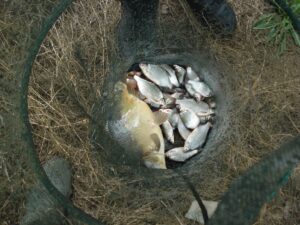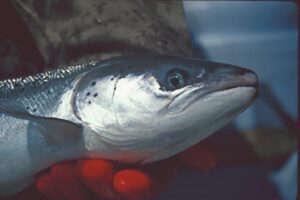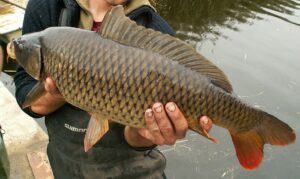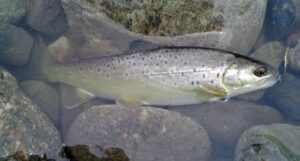Coarse Fish: Common Bullhead (Cottus perifretum)
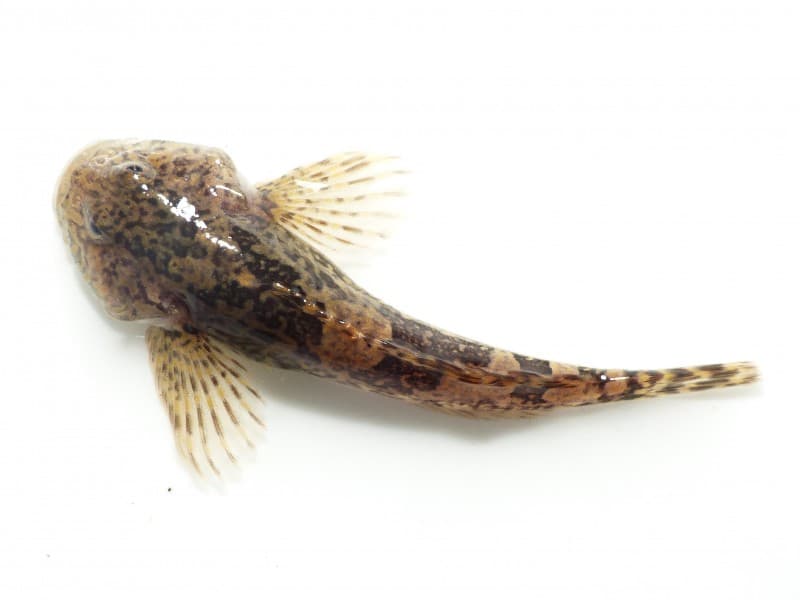
The Common Bullhead (Cottus perifretum) is a freshwater fish from the Cottidae family.
This small fish, often overlooked, plays a crucial ecological role in river and stream ecosystems, where it prefers cold, oxygen-rich waters. Its unique appearance, with a broad, flat head and a speckled body, along with its feeding and reproductive habits, make it an exciting subject for biologists and an attraction for micro-fishing enthusiasts.
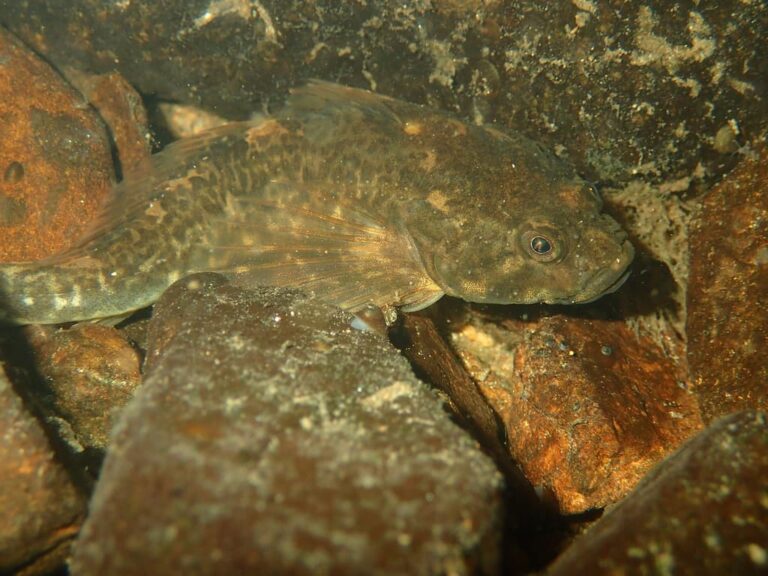
What is a Common Bullhead (Cottus perifretum)?
The Common Bullhead, also known by its scientific name Cottus perifretum, is a species belonging to the Cottidae family. It is often confused with the European Bullhead (Cottus gobio), but it has distinct characteristics that differentiate it from this closely related species. The Common Bullhead is primarily found in the freshwater of upper river and stream courses and is well adapted to cold aquatic environments.
Description of the Common Bullhead (Cottus perifretum)
Physical Description
The Common Bullhead is characterised by its sturdy body and broad, flat head. It has prominent eyes and an upward-facing mouth, with an operculum ending in two small spines.
It has two low and spiny dorsal fins, the second much longer than the first. Its pectoral fins are significantly developed in a fan shape on either side of the head, and it has a long anal fin with a rounded caudal fin.
An elongated, cylindrical body characterises the fish. Its back, flanks, and fins are yellowish-brown marbled with dark brown, while its belly is whitish, allowing it to camouflage in its environment.
| Class |
| Actinopterygii |
| Order |
| Scorpaeniformes |
| Family |
| Cottidae |
| Genus |
| Cottus |
| Species |
| C. perifretum |
| Binomial Name |
| Cottus perifretum (Freyhof, Kottelat & Nolte, 2005) |
Size and Weight
The Common Bullhead (Cottus perifretum) is a relatively small fish, typically measuring between 7 and 12 centimetres (2.75 to 4.72 inches) in length, although some specimens can reach up to 15 centimetres (5.9 inches). Its weight is generally proportional to its size.
Lifespan
The lifespan of the Common Bullhead is generally 4 to 5 years, but it can be longer in favourable environmental conditions.
Habitat and Distribution
Geographic Areas
The Common Bullhead is mainly widespread in Europe, especially in river systems. It is found in the upper courses of rivers and streams, including the watersheds of the North Sea, the Baltic Sea, and the Atlantic. It is also found in some parts of Western Asia, notably Russia.
Habitat Types
Its ecological preferences lead it to choose cold, well-oxygenated waters, where it can hide among rocks and gravel. Due to the degradation of its natural habitat due to pollution and modifications to watercourses, the Common Bullhead is sometimes threatened in certain regions, highlighting the importance of its conservation.
Adaptations to the Aquatic Environment
The Common Bullhead is well adapted to life in running waters, thanks to its developed pectoral fins that allow it to maintain itself at the bottom of watercourses.
Feeding Habits, Reproduction, and Fishing Interest of the Common Bullhead (Cottus perifretum)
Diet
Common Bullheads are bottom predators, feeding mainly on aquatic invertebrates such as insect larvae, crustaceans, and small molluscs.
Reproductive Behaviour
The breeding season takes place in spring. Males prepare a nest under rocks or in crevices, where females lay their eggs. The males then guard the eggs until they hatch.
Fishing Interest
Although generally not targeted for sport fishing due to its small size, the Common Bullhead may interest micro-fishing enthusiasts.
Fishing Techniques and Conservation Status
Fishing Techniques
Techniques to capture the Common Bullhead include using small lines and hooks with baits such as larvae or small insects.
Conservation Status on the IUCN Red List
According to the IUCN Red List, the Common Bullhead’s conservation status is “LC” (Least Concern). However, water quality and habitat preservation are crucial for its survival.
Common name for the Common Bullhead (Cottus perifretum)
The most popular names for the Common Bullhead are Chabot Fluviatile (french) and Scheldegroppe (German).
Differences between Common Bullhead (Cottus perifretum) and European Bullhead (Cottus gobio)
The Common Bullhead is distinguished from the European Bullhead (Cottus gobio) by several physical and behavioural characteristics, including its geographic distribution and specific adaptations to its habitat. The European Bullhead is found in a wider range of freshwater habitats, including rivers, streams, lakes, and ponds, while the Common Bullhead is mainly limited to river systems. Additionally, the European Bullhead has more varied colouration, ranging from light brown to olive green, with dark spots on the back and flanks. Regarding adaptations, the European Bullhead has pectoral fins that are more suitable for a variety of aquatic environments.


